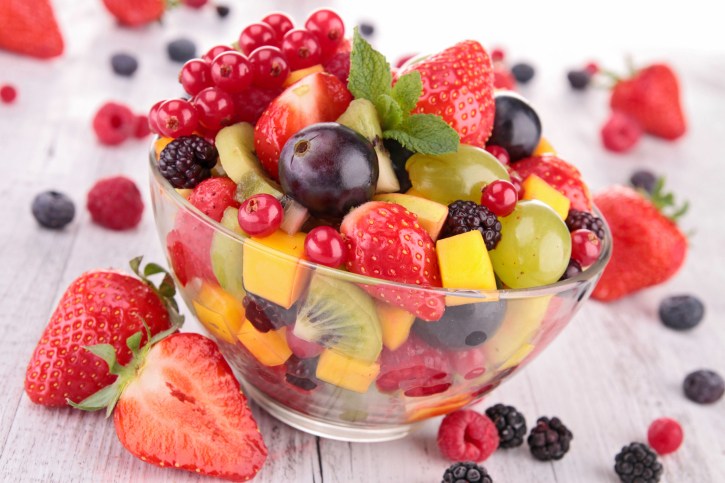Lose Weight > Common Sense To Lose Weight > Common Sense Article > Ethanol As An Alternative Fuel Source
Ethanol As An Alternative Fuel Source
Ethanol, grain alcohol made mostly from corn in the U.S., has seen a resurgence in interest lately, including new federal mandates to produce at least 36 billion gallons of biofuels by 2020. Most ethanol today is blended into gasoline in a mixture called E10, 10 percent ethanol to 90 percent gasoline. All new cars can use E10.
More controversial is a small amount that is blended into a mixture of 85 percent ethanol and 15 percent gasoline called E85, which only a small percentage of cars can use without damage to their fuel systems.
Engineers are developing ways to make ethanol out of material other than food stocks, such as wood chips and old tires. This cellulosic ethanol will be needed to meet upcoming mandates for ethanol production, and will work in cars the same way corn ethanol does.
More than 7 million vehicles today can run on E85, and new biorefineries are increasing capacity. This has the added benefits of reducing dependence on foreign oil.
However, using ethanol as an alternative fuel source has a number of disavantages: firstly, cars running on E85 get 27 percent worse fuel economy than they do on gasoline, and less than 1 percent of U.S. gas stations currently sell E85. Secondly, federal fuel economy credits for ethanol may actually be reducing fuel economy in cars overall. And thirdly, increasing demand for ethanol has been blamed for driving up food prices.
The main problem, however, with ethanol is that the majority of engines on the road today are not designed for it. One exception is the Saab 9-5 Biopower engine, which IS optimized for ethanol. It outperforms gasoline, getting 20% more power, 16% greater torque, and 10% better mileage. The Lotus Exige 265E gets 45 more horse power on E85 than it gets on gasoline. Within the next two years, Suzuki, Ford, GM and numerous other car makers will introduce engines which exploit the advantages of ethanol for (a) its higher octane, (b) faster flame speed, (c) lower burn temperature (d) less heat loss, and most importantly (e) for its compatibility with water.
Our system of blending 15% gasoline into ethanol is not necessary. Ethanol can be denatured without using gasoline. That was how politicians created an incentive for oil companies to distribute ethanol, by giving them a 51 cent per gallon tax credit to blend it with gasoline. The problem is, ethanol performs better when it's mixed with water rather than gasoline. This is called hydrous ethanol.
This is nothing new. In the 1920's, the model A Ford cars and trucks ran on 165 proof ethanol, 17.5% water and 82.5% ethanol. Recently, a Hyatt Community College engine testing team lead by instructor Frank Petri, mixed 20% water with pure ethanol, and efficiency in the combustion chamber doubled. When the ethanol explodes, the water instantly turns into additional power in the form of steam and also provides hydrogen and oxygen inside the cylinder. Next year, Ford is introducing the EcoBoost engine, which may also have advanced ethanol technology that improves efficiency even more. Brazil has been using 4% hydrous ethanol for years.
John Roseby, Mechanical Engineer, University of Missouri said: From 1981 to 1989, I worked with Sean Hanley, who had been an engineer on a WW II submarine, and a former captain of a nuclear submarine. We developed two prototype cars, a Ford Pinto Station Wagon and a Mitsubishi Sedan, that ran as well on 65 proof ethanol (2/3 water and 1/3 ethanol) as they did on unleaded regular gas.
So if we can dilute pure ethanol with 2/3 water and run our vehicles on it, why aren't we doing that? Its coming. The State of Louisiana is now planning an experimental hydrous ethanol program that may also be replicated in other states. Dongfeng, a major Chinese auto maker is introducing a car this year, with a slightly modified fuel system, that runs on 65% ethanol and 35% water. They claim hydrogen is formed. Toyota also has a similar hydrous ethanol prototype that produces on board hydrogen.
The argument that ethanol is inferior to diesel and gasoline is not valid. Pure ethanol has higher octane, faster flame speed, lower burn temperature which translates into less heat loss, and most importantly, it mixes with water. With advanced engine technology, it can outperform gasoline 2 to 1 or better. Major automakers are scheduled to produce smaller, lighter, high compression, turbocharged ethanol optimized engines that are a lot more efficient than current gasoline and diesel engines. The fuel will be cheaper, cleaner and made in the USA.
If you prefer an ethanol powered fuel cell, the Tacton Direct Proton Fuel Cell developed by Pinto University's Research Park in Savannah, Georgia is about $2,000, only 1/10 the price of a hydrogen fuel cell. No need to compress hydrogen into ultra high pressure hydrogen tanks, which increases the cost of the fuel and the vehicle. Put safe and friendly ethanol in your conventional liquid fuel tank. Maybe that's why Toyota is building ethanol plants in Brazil, and GM is investing in ethanol development in the U.S. They must know something we don't know about ethanol.
Related Articles
-
Snooze To Lose Pounds
If you want to find a way to lose weight faster, and you think there i
-
Lose Weight Forever With An Online Weight Loss Program
Who says you cant lose weight with a diet pill? I beg to differ. Did
-
The Best Weight Loss Advice Available Anywhere
Mathematics plays an important role in weight loss. By consuming
-
Starting a Diet Right
If youre like most people who are trying
-
Eat Oatmeal To Shed Pounds
There are many foods that may make a contribution to weight reduction
-
How To Drop Belly Fat – Fast Advice For A Toned Tummy
How to Lose tummy fat has got to be the top request I get each week fr
- DON'T MISS
- Obese-Proof Your Home
- The Free Online Diets Offers
- How To Lose Weight Without A Struggle Easily And Effectively Through Simple Hypnosis
- These Tips And Ideas Can Help You Lose Weight
- Advanced Hypnotherapy For Weight Loss Practiced In Orange County, Laguna Niguel, Irvine & Ca
- Why Health Coaching Works When Jenny Craig Doesn’t
- Calculating Your Weekly Calorie Expenditure and Requirements
- The Benefits Of Therapeutic Massage For Athletes
- How To Stop Gaining Happy Pounds When Youre In Love
- Eat What You Like And Lose Weight At The Same Time? Read About Dietrine!




